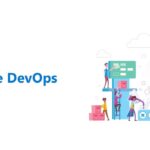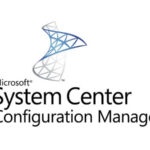Almalinux에서 EPEL 및 EPEL Next 활성화 9 또는 록키 리눅스 9.
Enterprise Linux systems like Almalinux and Rocky Linux 9 come with a default set of packages that enable their basic functioning. 하지만, users often require additional packages to enhance the functionality and capabilities of their systems. This is where the EPEL repository comes into play.
EPEL or Extra Packages for Enterprise Linux is a Fedora Special Interest Group that creates, maintains, and manages a high-quality set of additional packages for Enterprise Linux, including, but not limited to, Red Hat Enterprise Linux (RHEL), CentOS, Scientific Linux (SL), Oracle Linux (OL), 알마리눅스 (AL) and Rocky Linux (RL). EPEL packages are usually based on their Fedora counterparts and should not conflict with or replace packages in the base Enterprise Linux distributions.
This guide will demonstrate how to enable the EPEL and EPEL Next repositories on Almalinux 9 또는 록키 리눅스 9.
Table of Contents
- About EPEL
- Understanding EPEL Next
- Benefits of EPEL
- Steps to Enable EPEL and EPEL Next
- Updating System
- Installing EPEL and EPEL Next
- Verifying the Installation
- Using the EPEL Repository
- EPEL Command Tips
- Disabling EPEL Temporarily
- Keeping EPEL Packages Updated
- End of Life Releases
- How to Contribute to EPEL
- Communicating with EPEL
- 결론
About EPEL
EPEL is a community-based project led by the Fedora team that provides additional packages for Linux distributions, including RHEL, CentOS, 알마리눅스, Rocky Linux, and more. These packages offer extra functionality that is not available through the default system repositories, enabling users to easily install additional software packages not included in the base distribution.
The term EPEL stands for Extra Packages for Enterprise Linux. These packages are deemed to be stable, well-tested, and are maintained by the EPEL project. The EPEL repository can be added to any RHEL or CentOS systems, thereby allowing users to easily install additional software packages.
Understanding EPEL Next
While EPEL packages are built for RHEL, EPEL Next is designed to offer an alternative repository for building against CentOS Stream. This is particularly useful for upcoming RHEL library rebases or minimum version build requirements not yet in RHEL.
EPEL Next maintains its distgit branches, koji build targets, and bodhi releases, with a .next disttag for upgrade paths. It’s important to note though that EPEL Next is not a complete rebuild of all the EPEL packages but only those packages that need to be rebuilt to install on CentOS Stream. The EPEL Next repo is meant to be layered on top of the regular EPEL repository.
Benefits of EPEL
Installing the EPEL repository on your Rocky Linux system offers several benefits:
- Access to Additional Packages: EPEL provides a wide range of extra packages that are not available in the default Rocky Linux repositories.
- Compatibility with RHEL: Since Rocky Linux is a RHEL derivative, EPEL packages are designed to work seamlessly with your system.
- Regular Updates: EPEL is actively maintained, ensuring that you receive regular updates and security patches for the packages installed from this repository.
Steps to Enable EPEL and EPEL Next
Updating System
Before you proceed with enabling the repository, it is crucial to update your Linux system to get the available security updates and rebuild the DNF package cache. This can be done using the following command:
sudo dnf updateInstalling EPEL and EPEL Next
After updating your system, you can proceed with the installation of the EPEL and EPEL Next repositories. The command to enable these repositories depends on your specific version of Rocky Linux or Almalinux.
을 위한 Almalinux 9 또는 록키 리눅스 9, you need to first enable the CodeReady Builder repository (CRB) which contains additional packages that complement the main distribution and enhance its capabilities. To enable CRB, 다음 명령을 사용하십시오:
sudo dnf config-manager --set-enabled crbOnce CRB is enabled, you can install the EPEL repositories with the following commands:
sudo dnf install https://dl.fedoraproject.org/pub/epel/epel-release-latest-9.noarch.rpm sudo dnf install https://dl.fedoraproject.org/pub/epel/epel-next-release-latest-9.noarch.rpm을 위한 Almalinux 8 또는 록키 리눅스 8, you need to first enable the PowerTools repository which provides additional development and debugging tools. To enable PowerTools, 다음 명령을 사용하십시오:
sudo dnf config-manager --set-enabled powertoolsOnce PowerTools is enabled, you can install the EPEL repositories with the following commands:
sudo dnf install https://dl.fedoraproject.org/pub/epel/epel-release-latest-8.noarch.rpm sudo dnf install https://dl.fedoraproject.org/pub/epel/epel-next-release-latest-8.noarch.rpmVerifying the Installation
After successfully enabling the EPEL repository, it is essential to verify the installation. This ensures that the repository has been correctly configured and is ready for use. You can do this by running the following command:
dnf repolist | grep epelIf the output lists both the EPEL and EPEL Next repositories, it confirms the successful integration of the EPEL repository into your system.
Using the EPEL Repository
Once the EPEL repository has been enabled, you can use standard tools like ‘yum’ or ‘dnf’ to install packages and their dependencies. By default, the stable EPEL repo is enabled. 하지만, there is also an ‘epel-testing’ repository that contains packages that are not yet deemed stable.
EPEL Command Tips
Here are some foundational commands to get you started with using EPEL:
Searching for Specific Packages
To search for a specific package in the EPEL repository, you can use the dnf search command as follows:
sudo dnf --enablerepo="epel" search <keyword>Replace <keyword> with a term related to the package you’re looking for. This will return a list of packages that match or are related to the keyword.
Getting Detailed Information
To get detailed information about a specific package, including its description, 버전, and dependencies, 다음 명령을 사용하십시오:
sudo dnf --enablerepo="epel" info <package_name>Checking for Package Updates in EPEL
To check if there are updates available for packages you’ve installed from EPEL, 다음 명령을 사용하십시오:
sudo dnf --enablerepo="epel" check-updateThis will list all packages from EPEL that have updates available.
Removing a Package
If you’ve installed a package from EPEL and wish to remove it, 다음 명령을 사용하십시오:
sudo dnf remove <package_name>Replace <package_name> with the name of the package you want to uninstall.
Disabling EPEL Temporarily
There might be times when you want to install or update packages without considering the EPEL repository. To temporarily disable EPEL during a DNF operation, 다음 명령을 사용하십시오:
sudo dnf --disablerepo="epel" <command>Replace <command> with the DNF command you wish to execute.
Keeping EPEL Packages Updated
To ensure that all packages you’ve installed from EPEL are updated, 다음 명령을 사용하십시오:
sudo dnf --enablerepo="epel" upgradeThis will upgrade all EPEL packages to their latest versions.
End of Life Releases
It’s important to note that EPEL has End of Life (EOL) releases that are no longer supported. Due to major security changes in SSL in the last 10 years, older releases may not be able to directly point to these releases. Therefore, for these EOL releases, it is recommended to have a newer system mirror the entire archive and then for your systems to point to that mirror.
How to Contribute to EPEL
EPEL is always looking for interested folks to help out. They always need package maintainers, QA/testers, bug triage, and documentation writers.
Communicating with EPEL
There are many ways to communicate with EPEL and its members. The #epel IRC channel on Libera Chat offers real-time support for EPEL users and developers. This channel is bridged to epel:fedoraproject.org on Matrix. The epel-devel mailing list is for general EPEL discussion. 또한, the EPEL Steering Committee meets on Wednesday every week in the Fedora Meeting 1 Matrix channel. Feel free to join them!
결론
In conclusion, activating the EPEL and EPEL Next repositories on Almalinux 9 또는 록키 리눅스 9 significantly extends the range of software options available to you, thereby enhancing both the versatility and the performance of your server or workstation. The installation process is straightforward and aligns with standard repository management practices in Linux. With EPEL now part of your setup, you’re all set to explore and install additional packages that enhance the functionality and efficiency of your Linux environment.




















